Google bus
description: shuttle bus service for Google employees in the San Francisco Bay Area
36 results

Utopia Is Creepy: And Other Provocations
by
Nicholas Carr
Published 5 Sep 2016
Through a kind of hallucinogenic vehicular transmogrification, it has become the Google bus, shuttling geeks between their homes in San Francisco and the company’s headquarters in Mountain View. The makeover is, on the surface, extreme. The Kesey bus was a 1939 International Harvester school bus bought for peanuts; the Google bus is a plush new Van Hool machine that goes for half a million bucks. The Kesey bus was brightly colored, a rolling Grateful Dead poster; the Google bus is drab and anonymous, a rolling Jos. A. Bank suit. The Kesey bus was raucous and raunchy; the Google bus is hushed and chaste. The Kesey bus carried a vat of LSD for connecting with the group mind; the Google bus has wi-fi.
…
The Kesey bus carried a vat of LSD for connecting with the group mind; the Google bus has wi-fi. Kesey’s Pranksters named their bus Further. If the Google bus had a name, it would be Safer. Despite the differences, both buses are vehicles of communalism and transcendence. They carry groups of young people eager to distance themselves from the reigning culture, eager to define themselves as members of a select and separate society that will serve as a model for the superior society of the future. The existing culture is too corrupt, too far gone, to be reformed from within. You have to escape it in order to rebuild it.
…
And this is actually where the Valley is going. This is where we’re going over the next ten years. . . . The best part is this: the people who think this is weird, the people who sneer at the frontier, who hate technology—they won’t follow you out there. The Kesey bus dead-ended somewhere in Mexico, its allegorical gaskets blown. The Google bus continues on its circuit between the City and the Valley, an infinite loop of infinite possibility. THE MYTH OF THE ENDLESS LADDER April 6, 2014 “ULTIMATELY, IT’S A VIRTUOUS CYCLE,” writes economics reporter Annie Lowrey in a Times Magazine piece on computer automation’s job-displacing effects, “because it frees humans up to work on higher-value tasks.”

The Internet Is Not the Answer
by
Andrew Keen
Published 5 Jan 2015
If I were old, I’d just take Uber,” the Los Angeles Times reports one San Francisco techie saying to his friends after reluctantly giving up his seat to an old lady on a Muni bus.29 Perhaps old ladies take Muni, I would have explained, because they can afford the $0.75 senior’s fare, whereas Travis Kalanick’s Uber service, with its surge pricing, could cost them $94 for a two-mile ride. And then there’s what the San Francisco–based writer Rebecca Solnit dubs, collectively, “the Google Bus.”30 These are sleeker and more powerful buses, menacingly anonymous in their absence of any identifying marks, with the same kind of opaque, tinted windows that masked the Battery from the prying eyes of the outside world. Unlike the Muni’s legacy buses, the Google Bus isn’t for everyone. It is a private bus designed to transport tech workers from their expensive San Francisco homes down to the offices of Google, Facebook, and Apple.
…
Google alone runs more than one hundred of these daily buses, which make 380 trips to its Googleplex office in Mountain View.31 These luxurious, Wi-Fi-enabled private buses—which, in total, make around four thousand daily scheduled pickups at public Bay Area bus stops—have been superimposed on top of San Francisco’s public transit grid by tech companies that have even begun to employ private security guards to protect their worker-passengers from irate local residents.32 The Google Bus has sparked such animosity from locals that, in December 2013, protesters in West Oakland attacked one of them, smashing a rear window and so outraging Tom Perkins that he compared the glass breaking to Kristallnacht in Nazi Germany.33 And, as if to mark the twenty-fifth anniversary of the Web, 2014 is the year that these demonstrations have become more politically organized and coherent.
…
Protesters in San Francisco’s Mission District waved such a construction-style sign outside the Google buses.53 “Public $$$$$$$$$ Private Gains,” another sign said.54 Others were less polite about these mysterious buses’ whisking their expensive cargo of privileged, mostly young white male workers down to Silicon Valley. “Fuck off Google,” came the message from West Oakland.55 Rebecca Solnit’s drawing attention to the “Google Bus,” which rides on public infrastructure and stops at public bus stops but is a private service run by private companies, has become the most public symbol now of this economic division between Silicon Valley and everyone else. “I think of them as the spaceships,” is how Solnit describes this new feudal power structure in Silicon Valley, “on which our alien overlords have landed to rule over us.”

I Hate the Internet: A Novel
by
Jarett Kobek
Published 3 Nov 2016
Adeline hadn’t gotten farther than a block before she heard the sounds of a crowd. She looked across the street. It was a large number of Latino youth. They were drunk and they were stoned and they were screaming. They were celebrating 2014. She heard a bus pulling up opposite her. It was a Google bus. The door of the Google bus opened. A team of twenty engineers emerged. They all sported Google Glass, a wearable computer built into eyeglasses. The principle virtue of Google Glass was that it allowed its wearers to record videos and thus act out their social inadequacies by alienating everyone around them.
…
After that, I decided I’m simply going to lie to everyone and say that I’m Marina Abramović. They’ve been tormenting me with her name for three years, so why not embrace the pain? Do you think it’s possible that people out there in New York Land might be inquiring with Marina Abramović as to whether or not she’s M. Abrahamovic Petrovitch?” Just then, a Google bus drove past. chapter seventeen The most visible sign of San Francisco’s gentrification was the appearance of white luxury buses which roamed the streets like vampires in search of a hissing blood feast. These buses provided transportation to people who lived in the city and worked at tech companies in Silicon Valley.
…
People came in search of alcohol and food and the illusion that if you combined alcohol and food, they added up to meaning. White lumbering Google buses drove past. “I suppose anything is better than writing about gonorrhea,” said Adeline. “Pardon me?” asked Erik Willem. “Oh, nothing, darling,” she said. “Every time I see a Google bus, I concoct very strange thoughts.” “The symbolism is awkward,” said Erik Willems. “I’d have figured out a less ostentatious way of handling the matter. That’s me. I don’t have billions of dollars. I don’t think these buses belong to Google. I think they’re either eBay or Apple.” “Do you know that sometimes I forget you still haven’t cracked the big four zero,” said Adeline.
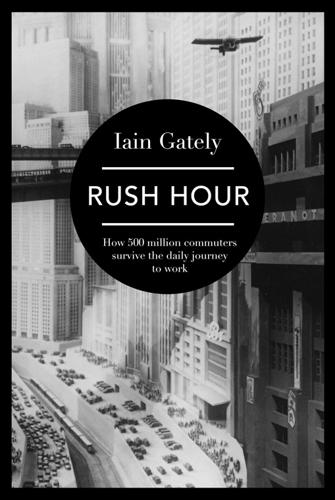
Rush Hour: How 500 Million Commuters Survive the Daily Journey to Work
by
Iain Gately
Published 6 Nov 2014
Hindman, Huffington Post, 26 February 2013: http://www.huffingtonpost.com/2013/02/26/marissa-mayer-memo-yahoo-home_n_2764725.html. 298 ‘a remote-access future possible’, see Surowiecki, ‘Face Time’. 298 ‘helmed by its own chef’, Tanya Steel, ‘Inside Google’s Kitchens’, Gourmet Live, 3 July 2012: http://www.gourmet.com/ food/gourmetlive/2012/ 030712/inside-googles-kitchens?printable=true. 299 ‘San Franciscans feel resentful’, Rory Carroll, ‘Why people hate the Google Bus’, Guardian, 26 May 2013. 300 ‘software engineer for a major internet company’, Carroll, ‘Why people hate the Google Bus’. 300 ‘a kind of symphony on wheels’, Justine Sharrock, ‘What’s it like to drive the “Google Bus”’, BuzzFeed, 24 July 2013: http://www.buzzfeed.com/justinesharrock/what-its-like-to-drive-the-google-bus. 301 For ‘mid-40’s software developer’, Andrew Valentine, Verizon, see: http://www.verizonenterprise.com/security/blog/index.xml?postername=Andrew %20Valentine. 301 ‘Have someone in Bangalore or Shanghai’, Timothy Ferriss, The 4-Hour Workweek, London, Vermilion, 2011 edition, p. 131. 302 ‘the factories of the 21st century information age’, ‘How Clean is Your Cloud?’
…
However, they compete for space on the roads with school and municipal bus services, and people who live along their routes but who don’t get free gourmet food at their workplaces think of them as the equivalents of the club railway carriages of Victorian robber barons. According to an op-ed in the San Francisco Chronicle, ‘San Franciscans feel resentful about the technology industry’s lack of civic and community engagement, and the Google bus is our daily reminder.’ It seems unfair that some people should have fun commuting, while others are packed together in havens for exotic bacteria. The companies that run the buses point out that each one takes fifty or so cars off the road, and so alleviate jams rather than causing them. Employees who commute on them are also ready to speak up for their benefits to the community and indeed the planet.

Silicon City: San Francisco in the Long Shadow of the Valley
by
Cary McClelland
Published 8 Oct 2018
Now, I pay $750 and God knows what my guy next door, who just moved in, pays. He is probably paying $2,000 at least for a studio in this neighborhood with a view of the park—maybe more. He works at a tech company, takes the Google bus on the corner. He sets out his laundry, somebody comes and does his laundry for him. You look down the corner and see the brown people and the poor people waiting for the community bus, and you see this kid waiting for the Google bus. Funny, it is environmentally sound, but it is just the symbolism. That is where we are headed: a whole class of people living a seamless or frictionless life, and they have a series of people working for them.
…
I can afford my lifestyle, which is not real highfalutin. I still go down every morning and plunk my four quarters in the Chronicle box on the corner. If I see a young person reading the newspaper now, on the train, I take a picture. Where is the shared knowledge? What is our common culture? If you are riding the Google bus, and you are looking on your cell phone for stories that are tailored just for you, and at night you are taking an Uber to a nightclub or a restaurant with a lot of other people just like you, where is the interaction with everybody else? Where is the knowledge of what other people are thinking or what’s going on in the world?

The People vs Tech: How the Internet Is Killing Democracy (And How We Save It)
by
Jamie Bartlett
Published 4 Apr 2018
Chapter 5: The Everything Monopoly 1 Douglas Rushkoff, one of the more self-aware of these people come close to an apology for his previous work in his recent book Throwing Rocks at the Google Bus (Penguin, 2016). 2 Before he become Google’s Chief Economist, Hal Varian wrote a book called Information Rules (Harvard Business Review Press, 1998), where he summed this all up very well: ‘positive feedback makes the strong get stronger and the weak get weaker, leading to extreme outcomes.’ 3 This, according to data available through Nielsen SoundScan, cited in Throwing Rocks at the Google Bus by Douglas Rushkoff. 4 Duncan Robinson, ‘Google heads queue to lobby Brussels’, Financial Times, 24 June 2015.
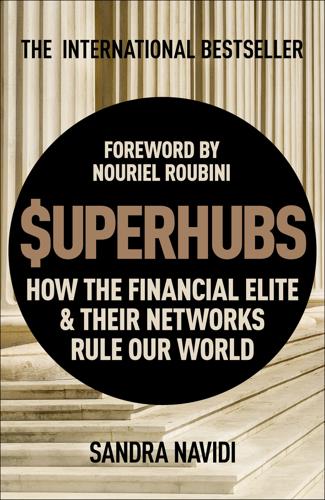
SUPERHUBS: How the Financial Elite and Their Networks Rule Our World
by
Sandra Navidi
Published 24 Jan 2017
The lack of growth exacerbates inequality even more and threatens social stability. But growth also comes with often overlooked costs and unintended consequences, such as the depletion of natural resources, exploitation of others, misallocation of human capital, and distortion of political systems. In his book Throwing Rocks at the Google Bus: How Growth Became the Enemy of Prosperity, Douglas Rushkoff argues that we are caught in a growth trap, where we have lost track of the purpose of the economy and made growth an end in itself, driving a jobless recovery and low-wage economy.45 But what if we are unable to produce substantially stronger growth?
…
Wallerstein, World-Systems Analysis, 77. 44. Adam Taylor, “Is Vladimir Putin Hiding a $200 Billion Fortune?” Washington Post, February 20, 2015, http://www.washingtonpost.com/blogs/worldviews/wp/2015/02/20/is-vladimir-putin-hiding-a-200-billion-fortune-and-if-so-does-it-matter. 45. Douglas Rushkoff, Throwing Rocks at the Google Bus: How Growth Became the Enemy of Prosperity (New York: Penguin Publishing Group, 2016), 4, 15, 22, Kindle edition. 46. Meadows, Thinking in Systems, Kindle location 42-46; xi; Donella Meadows, Jorgen Randers, and Dennis Meadows, Limits to Growth: The 30-Year Update (Chelsea, Vermont, Chelsea Green Publishing, 2004), Kindle location 119, Kindle edition. 47.
…
See Troubled Asset Relief Program Technologization, xxvi, 8 Technology, 99 “Teflonic identity maneuvering,” 224 Telecommunications, 99 Tepper, David, 88 Tepper, Ray, 24 Tett, Gillian, 160 TGG, 140 Thain, John, 56, 85, 90, 182 Thatcher, Margaret, 16 Theron, Charlize, 115 Thiel, Peter, 121 Thiel Capital, 121 Think tanks, 105–106 Third Point, 109 Thought construct, 63 Thought leaders, 47–51 Thought leadership, 96 Throwing Rocks at the Google Bus: How Growth Became the Enemy of Prosperity, 220 Time, 65 Times of London, 136 Timken, William, 196 Tony Blair Associates, 170 Too Big to Fail, 172 “Toxic memo gate,” 187 Transactional capital, 168 Transactional relationships, 104 Transcendental meditation, 70 Transnational financial elite, 77–78 Transparency International, 17 “Transparency library,” 71 Travelholics, 134 Trichet, Jean-Claude, 118, 177–178 Trilateral Committee, 142 Troubled Asset Relief Program, 35, 153, 173 Trust, 13, 78–79, 98–99, 222–223 Tsinghua University, 103 Tucker, Paul, 43 Turner, Lord Adair, 27, 107, 215 Type A personality, 56 Tyson, Laura, 48 U U2, 27 UBS, 42, 106, 179 UCLA, 30 U.K.

The Driver in the Driverless Car: How Our Technology Choices Will Create the Future
by
Vivek Wadhwa
and
Alex Salkever
Published 2 Apr 2017
The protesters flinging feces at the Google-buses in downtown San Francisco gave voice to frustration that rich techies are taking over the City by the Bay; but the protest was based on scant logic. The private buses were taking cars off the roads, reducing pollution, minimizing traffic, and fighting global warming. Could flinging feces at a Google-bus turn back the clock and reduce prices of housing to affordable levels? The 2016 presidential campaign was the national equivalent of the Google-bus protests. The supporters of Donald Trump, largely white and older, wanted to turn back the clock to a pre-smartphone era when they could be confident that their lives would be more stable and their incomes steadily rising.

Stakeholder Capitalism: A Global Economy That Works for Progress, People and Planet
by
Klaus Schwab
Published 7 Jan 2021
While he and his fellow founders, investors, and employees were doing extremely well for themselves, some less well-off San Franciscans were so deprived of opportunities and income they literally started “throwing rocks at the Google bus,” the private transport service that shuttled technology workers from their homes in San Francisco to the Google campus and back. Some observers, such as writer Douglas Rushkoff, who wrote Throwing Rocks at the Google Bus: How Growth Became the Enemy of Prosperity, realized it was just one of many signs that Big Tech's effect was to widen the divides between haves and have-nots and that if left unchecked, the situation would worsen.
…
See also specific country Subsidiarity principle, 181–183 Suez Canal, 103, 200 Sustainable Development Goals (UN), 189, 206, 207, 250 Swabia (Germany), 4, 8, 19, 251 Sweden COVID-19 pandemic response by, 220 stakeholder concept adopted in, 174 vote for right-wing populist parties (2000, 2017–2019), 84fig Swiss Federation, 181 Switzerland continued trust in public institutions in, 196 history of direct democracy in, 195 precious stones/metals imported to China through, 64 T Tabula rasa, 237 Taiwan, 59, 98 See also Asian Tigers Tanzania, 70 TaskRabbit (US), 237 Tata Consulting Services (TCS) [India], 68 Tata Steel (India), 141 Taxation French Yellow Vests (Gilets Jaunes) protests over, 86–87 high Danish rate of, 119 OECD's efforts to create fair global tax rules for Internet, 212 San Francisco's Proposition C proposing tax to help the homeless, 212–213 Stakeholder Capitalism Metrics prosperity pillar on, 214, 249 Teacher Corps, 135 Tech Mahindra [India], 68 Technological disruption changing business landscape, 126–129 Dansk Metal's industrial robots, 115, 117 labor market and challenge of automation, 115–126 Singapore job displacement due to, 125–126 steam engine as, 102, 116, 130–131 See also Digital economy Technological revolutions First Industrial Revolution (19th century), 56, 71, 108, 116, 119, 130–134, 135, 161 First Technological Revolution, 45fig–46 Second Industrial Revolution (1945–early 1970s), 8, 18, 45fig, 105–106, 116, 119, 134–136, 204 Third Industrial Revolution, 15, 45, 116, 137–142 Fourth Industrial Revolution, 18, 45, 68, 71, 116, 122, 125, 142–145, 161–162, 177, 186, 201, 208, 212, 213, 237, 239 Technologies artificial intelligence (AI), 143–144, 145, 161 automation, 115–126 China's “maker movement” of tech start-ups, 55 climate change and technological process, 161–162 connective, 177, 225, 227–228 cryptocurrencies, 161 Dansk Metal's industrial robots working with employees, 115 general-purpose technologies (GPTs), 143 Internet and digital connectivity, 225, 227–228, 232 Internet of Things, 18, 72, 161 Kuznets Wave on income inequality fluctuation and, 45fig–46 shaping positive vs. negative applications of, 144–145 Shenzhen (China) known for homegrown tech companies, 55, 57–61 tech unicorns of ASEAN nations, 66, 67fig workers who oppose automation, 115–116 The Technology Trap (Frey), 116, 135 Tech unicorns (ASEAN nations), 66, 67fig Tencent (US), 55, 60, 143 Tesla (US), 201 Tett, Gillian, 216 Thailand economic recession (1997) in, 97–98 predicted economic growth (2020–2021) in, 65–66 rubber exports to China, 64 Thaker, Jagadish, 223 Thatcher, Margaret, 122 Theodul Glacier, 51 Thiel, Peter, 208–209 Third Industrial Revolution, 15, 45, 116, 137–142 Thompson, Nicholas, 128 3D printing, 107, 108, 116 Thunberg, Greta, 52–53, 86, 147–150, 168, 250 ThyssenKrupp, 141 Tik Tok, 61 TIME Magazine, 172 Tindall, Stephen, 221 Tokopedia (Indonesia), 97 Total (France), 95 “Trade in the Digital Era” report (2019) [OECD], 107 Traveloka (Indonesia), 97 Treaty of Versailles (1919), 5–6 Trente Glorieuses, 110 Throwing Rocks at the Google Bus: How Growth Became the Enemy of Prosperity (Rushkoff), 210 Trust loss of trust in public institutions, 196 rebuilding of public trust in business sector, 210–212 Tsinghua University's School of Economics and Management, 225–226 Tuberculosis sanatorium treatments, 11 Twain, Mark, 133 21st century stakeholder capitalism.
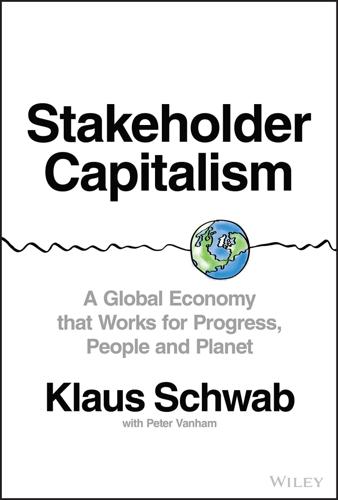
Stakeholder Capitalism: A Global Economy That Works for Progress, People and Planet
by
Klaus Schwab
and
Peter Vanham
Published 27 Jan 2021
While he and his fellow founders, investors, and employees were doing extremely well for themselves, some less well-off San Franciscans were so deprived of opportunities and income they literally started “throwing rocks at the Google bus,” the private transport service that shuttled technology workers from their homes in San Francisco to the Google campus and back. Some observers, such as writer Douglas Rushkoff, who wrote Throwing Rocks at the Google Bus: How Growth Became the Enemy of Prosperity, realized it was just one of many signs that Big Tech's effect was to widen the divides between haves and have-nots and that if left unchecked, the situation would worsen.
…
See also specific country Subsidiarity principle, 181–183 Suez Canal, 103, 200 Sustainable Development Goals (UN), 189, 206, 207, 250 Swabia (Germany), 4, 8, 19, 251 Sweden COVID-19 pandemic response by, 220 stakeholder concept adopted in, 174 vote for right-wing populist parties (2000, 2017–2019), 84fig Swiss Federation, 181 Switzerland continued trust in public institutions in, 196 history of direct democracy in, 195 precious stones/metals imported to China through, 64 T Tabula rasa, 237 Taiwan, 59, 98 See also Asian Tigers Tanzania, 70 TaskRabbit (US), 237 Tata Consulting Services (TCS) [India], 68 Tata Steel (India), 141 Taxation French Yellow Vests (Gilets Jaunes) protests over, 86–87 high Danish rate of, 119 OECD's efforts to create fair global tax rules for Internet, 212 San Francisco's Proposition C proposing tax to help the homeless, 212–213 Stakeholder Capitalism Metrics prosperity pillar on, 214, 249 Teacher Corps, 135 Tech Mahindra [India], 68 Technological disruption changing business landscape, 126–129 Dansk Metal's industrial robots, 115, 117 labor market and challenge of automation, 115–126 Singapore job displacement due to, 125–126 steam engine as, 102, 116, 130–131 See also Digital economy Technological revolutions First Industrial Revolution (19th century), 56, 71, 108, 116, 119, 130–134, 135, 161 First Technological Revolution, 45fig–46 Second Industrial Revolution (1945–early 1970s), 8, 18, 45fig, 105–106, 116, 119, 134–136, 204 Third Industrial Revolution, 15, 45, 116, 137–142 Fourth Industrial Revolution, 18, 45, 68, 71, 116, 122, 125, 142–145, 161–162, 177, 186, 201, 208, 212, 213, 237, 239 Technologies artificial intelligence (AI), 143–144, 145, 161 automation, 115–126 China's “maker movement” of tech start-ups, 55 climate change and technological process, 161–162 connective, 177, 225, 227–228 cryptocurrencies, 161 Dansk Metal's industrial robots working with employees, 115 general-purpose technologies (GPTs), 143 Internet and digital connectivity, 225, 227–228, 232 Internet of Things, 18, 72, 161 Kuznets Wave on income inequality fluctuation and, 45fig–46 shaping positive vs. negative applications of, 144–145 Shenzhen (China) known for homegrown tech companies, 55, 57–61 tech unicorns of ASEAN nations, 66, 67fig workers who oppose automation, 115–116 The Technology Trap (Frey), 116, 135 Tech unicorns (ASEAN nations), 66, 67fig Tencent (US), 55, 60, 143 Tesla (US), 201 Tett, Gillian, 216 Thailand economic recession (1997) in, 97–98 predicted economic growth (2020–2021) in, 65–66 rubber exports to China, 64 Thaker, Jagadish, 223 Thatcher, Margaret, 122 Theodul Glacier, 51 Thiel, Peter, 208–209 Third Industrial Revolution, 15, 45, 116, 137–142 Thompson, Nicholas, 128 3D printing, 107, 108, 116 Thunberg, Greta, 52–53, 86, 147–150, 168, 250 ThyssenKrupp, 141 Tik Tok, 61 TIME Magazine, 172 Tindall, Stephen, 221 Tokopedia (Indonesia), 97 Total (France), 95 “Trade in the Digital Era” report (2019) [OECD], 107 Traveloka (Indonesia), 97 Treaty of Versailles (1919), 5–6 Trente Glorieuses, 110 Throwing Rocks at the Google Bus: How Growth Became the Enemy of Prosperity (Rushkoff), 210 Trust loss of trust in public institutions, 196 rebuilding of public trust in business sector, 210–212 Tsinghua University's School of Economics and Management, 225–226 Tuberculosis sanatorium treatments, 11 Twain, Mark, 133 21st century stakeholder capitalism.

Survival of the Richest: Escape Fantasies of the Tech Billionaires
by
Douglas Rushkoff
Published 7 Sep 2022
Chapter 4: The Dumbwaiter Effect 47 “The integration of all Uber brands … life” : Megan Rose Dickey, “Uber Unveils New Skyport Designs for Uber Air,” TechCrunch , June 11, 2019, https:// techcrunch .com /2019 /06 /11 /uber -unveils -new -skyport -designs /. 47 RVs and those living in cars : Marina Gorbis, “Hiding in Plain Sight: America’s Working Poverty Epidemic,” Medium , April 14, 2021, https:// medium .com /institute -for -the -future /hiding -in -plain -sight -americas -working -poverty -epidemic -740f0b7202ea. 49 “renewables” : Richard Maxwell and Toby Miller, Greening the Media (New York: Oxford University Press, 2012). 49 “the dumbwaiter effect” : Douglas Rushkoff, Throwing Rocks at the Google Bus: How Growth Became the Enemy of Prosperity (New York: Penguin Portfolio, 2016), 19. 50 miscarriages, cancers, and shortened lifespan : Producing the Fairphone , directed by Geert Rozinga (De Eerlijke Onderneming, 2016), https:// www .vpro .nl /programmas /tegenlicht /kijk /afleveringen /2016 -2017 /de -eerlijke -onderneming .html. 51 “create the perfect tee” : Amazon, “Made for You,” https:// www .amazon .com /stores /made+for+you /page /E853E0F0 -6F79 -442D -B7E8 -3A0E0531FAF2, accessed August 9, 2021.
…
Chapter 13: Pattern Recognition 176 “To the Planetarium” : Walter Benjamin, “To the Planetarium,” in One-Way Street: And Other Writings , translated by Edmund Jephcott (Brooklyn, NY: Verso, 2021). 179 “You can build” : Tyson Yunkaporta, Sand Talk: How Indigenous Thinking Can Save The World (New York: HarperOne, 2020), 78–79. 179 eating local foods is better for our health : Vicki Robin, Blessing the Hands That Feed Us: What Eating Closer to Home Can Teach Us about Food, Community, and Our Place on Earth (Farming Hills, MI: Thorndike Press, 2014). 181 We consume over three billion gallons : Koustav Samanta and Roslan Khasawneh, and Florence Tan, “APPEC-Global oil demand seen reaching pre-pandemic levels by early 2022,” Reuters , September 27, 2021, https:// www .reuters .com /business /energy /appec -global -oil -demand -seen -reaching -pre -pandemic -levels -by -early -2022 -2021 -09 -27 /. 183 They pooled money : Jessica Gordon Nembhard, Collective Courage: A History of African American Cooperative Economic Thought and Practice (University Park, PA: Pennsylvania State University Press, 2014). 186 “Young people feel” : Elise Chen, “These Chinese Millennials Are ‘Chilling,’ and Beijing Isn’t Happy,” New York Times , July 3, 2021, https:// www .nytimes .com /2021 /07 /03 /world /asia /china -slackers -tangping .html. 186 “Amidst global shutdown” : Gaya Herrington, “Beyond Growth,” WEFLIVE , January 23, 2020, https:// www .weflive .com /story /e968fb0963974e1e8f6c636e5654cbc2. 186 “resource scarcity has not” : Edward Helmore, “Yep, It’s Bleak, Says Expert Who Tested 1970s End-of-the-World Prediction,” Guardian , July 25, 2021, https:// www .theguardian .com /environment /2021 /jul /25 /gaya -herrington -mit -study -the -limits -to -growth. 188 “only now … all of us ”: American Utopia, directed by Spike Lee (HBO, 2021), https:// www .hbo .com /specials /american -utopia. 188 There’s no “solution” : See Sarah Pessin’s work, including “From Mystery to Laughter to Trembling Generosity: Agono-Pluralistic Ethics in Connolly v. Levinas,” International Journal of Philosophical Studies 24, no. 5 (2016): 615–38. Also by Douglas Rushkoff Team Human Throwing Rocks at the Google Bus: How Growth Became the Enemy of Prosperity Present Shock: When Everything Happens Now Program or Be Programmed: Ten Commands for a Digital Age Life, Inc.: How the World Became a Corporation and How to Take It Back Get Back in the Box: Innovation from the Inside Out Open Source Democracy Nothing Sacred: The Case for Open Source Judaism Coercion: Why We Listen to What “They” Say Playing the Future: What We Can Learn from Digital Kids Media Virus: Hidden Agendas in Popular Culture The GenX Reader Cyberia: Life in the Trenches of Hyperspace Novels Ecstasy Club Bull Graphic Novels Aleister and Adolf A.D.D.

Cogs and Monsters: What Economics Is, and What It Should Be
by
Diane Coyle
Published 11 Oct 2021
Ceci, Stephen J., Donna K. Ginther, Shulamit Kahn, and Wendy M. Williams, 2014, ‘Women in Academic Science: A Changing Landscape’, Psychological Science in the Public Interest, 15 (3), 75–141. Cellan-Jones, R., 2021, Always On, London: Bloomsbury. Chan, M. L., 2017, ‘The Google Bus’, The Point (14), July, https://thepointmag.com/examined-life/the-google-bus/, accessed 10 August 2020. Chen, M. K., V. Lakshminarayanan, and L. Santos, 2005, ‘The Evolution of Our Preferences: Evidence from Capuchin Monkey Trading Behaviour’, http://www.its.caltech.edu/~camerer/NYU/02-ChenLakshminarayananSantos.pdf. Christophers, B., 2013, Banking Across Boundaries, Hoboken, NJ: Wiley/Blackwell.

The New Class Conflict
by
Joel Kotkin
Published 31 Aug 2014
George Avalos, “Silicon Valley Job Growth Has Reached Dot-Com Boom Levels, Report Says,” San Jose Mercury News, February 7, 2013. 151. Rory Carroll, “How Wealth of Silicon Valley’s Tech Elite Created a World Apart,” Observer (UK), May 25, 2013; Avalos, “Silicon Valley Job Growth”; Caille Millner, “Why We’re Invisible to Google Bus Riders,” San Francisco Chronicle, April 26, 2013; Joseph Malchow, “Those Nonsensical ‘Google Bus’ Attacks,” Wall Street Journal, March 10, 2014; Vauhini Vara, “Tech Firms Log On to San Francisco’s Mayoral Race,” Wall Street Journal, November 7, 2011; Yoona Ha, “Twitter, Other Tech Companies Get S.F. Tax Breaks but Show Little Progress Hiring in Neighborhood,” San Francisco Public Press, November 11, 2013, http://sfpublicpress.org/news/2013-11/twitter-other-tech-companies-get-sf-tax-breaks-but-show-little-progress-hiring-in-neighborhood. 152.
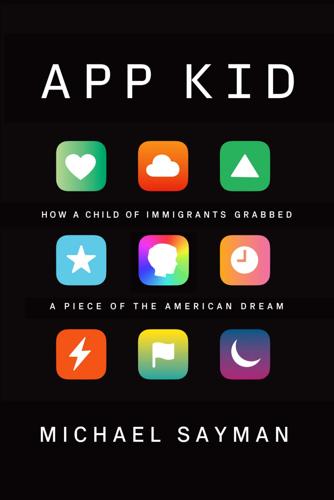
App Kid: How a Child of Immigrants Grabbed a Piece of the American Dream
by
Michael Sayman
Published 20 Sep 2021
I wanted to be a real person to him. Now the typing dots weren’t even there anymore. Shit! I dialed William’s number. Just as it was going to voicemail, a text popped up with his address. No “Can’t wait to see you.” No favoriting my picture. It was fine. He was probably in class or something. I mailed my boxes and hopped on a Google bus to show my face at work, trying not to worry about the fact that William hadn’t liked the box picture. Should I call him and make sure everything was okay? I didn’t want to sound needy. My strategy was to keep it light and easy—like I was just coming for an open-ended visit, which, technically, I was.
…
Moving from Facebook to the main Google campus had been seamless in many ways, everything so similar and shiny-happy and coddling that I sometimes used to forget I’d moved at all. But Area 120 was lower-key. On this part of the campus, there were no restaurants or gyms. You had to drive yourself to work or take a smaller Google bus connection from the main campus. I think this was all deliberate—they’d built Area 120 with the hopes that we’d be more creative outside of the Google bubble. It might have helped a little. But there was no escaping the fact that we lived and worked within the larger bubble of Silicon Valley, the greatest echo chamber of opinions and ideas that’s probably ever existed.

Ghost Road: Beyond the Driverless Car
by
Anthony M. Townsend
Published 15 Jun 2020
Goldwyn, “An Informal Transit System Hiding in Plain Sight: Brooklyn’s Dollar Vans and Transportation Planning and Policy in New York City” (PhD diss., Columbia University, 2017), 96. 100hauling upwards of 35,000 workers on 800 vehicles: Eillie Anzilotti, “The Reach of the Bay Area’s ‘Tech Buses,’” CityLab, September 16, 2016, https://www.citylab.com/transportation/2016/09/the-reach-of-the-bay-areas-tech-buses/500435/. 101“able to provide point-to-point service”: Christopher Alexander, A Pattern Language: Towns, Buildings, Construction (New York: Oxford University Press, 1977), 112. 101gone back to the public-transit lines: Laura Bliss, “Bridj Is Dead, but Microtransit Isn’t,” CityLab, May 3, 2017, https://www.citylab.com/tran sportation/2017/05/bridj-is-dead-but-microtransit-isnt/525156/. 102causing traffic and creating safety risks for pedestrians: Georgios Kalogerakos, “Driverless Mobilities: Understanding Mobilities of the Future” (master’s thesis, Aalborg University, 2017), 79. 102More than 12,000 people rode the six shuttles: “City Overview: Trikala,” CityMobil2, accessed June 13, 2018, http://www.citymobil2.eu/en/city-activities/large-scale-demonstration/trikala/(site discontinued). 102more accepting of the technology than were townspeople in France: City-Mobil2, Experience and Recommendations (CityMobil2, 2016), 32. 103a stylish name—the Navia: Melissa Riofrio, “The Little Shuttle That Can: Induct Navia Is First Self-Driving Vehicle,” PC World, January 8, 2014, https://www.pcworld.com/article/2085006/the-little-shuttle-that-can-induct-navia-is-first-self-driving-vehicle.html. 103the company filed for bankruptcy: Derek Christie et al., “Pioneering Driverless Electric Vehicles in Europe: The City Automated Transport Systems (CATS),” Transportation Research Procedia 13 (2016): 30–39, https://hal.inria.fr/hal-01357309/document. 103a completely redesigned vehicle: “Sion, CH Is Piloting AVs,” Initiative on Cities and Autonomous Vehicles, Bloomberg Philanthropies, accessed February 20, 2019, https://avsincities.bloomberg.org/global-atlas/europe/ch/sion-ch; “Project ‘SmartShuttle,’” PostBus, accessed February 2019, https://www.postauto.ch/en/project-smartshuttle. 103driverless shuttles crawled along: “These 61 Cities Are Piloting AVs for Transit,” Initiative on Cities and Autonomous Vehicles, Bloomberg Philanthropies, accessed February 2019, https://avsincities.bloomberg.org/global-atlas/tags/transit. 104ferried more than 1.5 million passengers: National League of Cities, “Sustainability: Weaving a Microtransit Mesh,” Autonomous Vehicles: Future Scenarios, accessed April 12, 2019, http://avfutures.nlc.org/sustainability. 104sold more than 100 Armas and went public: “Navya Updates Its 2018 Revenue Target,” Navya, December 7, 2018, https://navya.tech/en/press/navya-updates-its-2018-revenue-target/. 105cut operating costs by as much as 40 percent: National League of Cities, “Sustainability: Weaving a Microtransit Mesh.” 106a “curb kiss” fee: Michael Cabanatuan and Kurtis Alexander, “Google Bus Backlash: S.F. to Impose Fees on Tech Shuttles,” SFGate, January 21, 2014, https://www.sfgate.com/bayarea/article/Google-bus-backlash-S-F-to-impose-fees-on-tech-5163759.php. 107a planned driverless-shuttle network: City of Bellevue, Washington, and City of Kirkland, Washington, “A Flexible, Electric, Autonomous Commutepool System,” Bellevue-Kirkland USDOT (grant proposal, 2018). 108leftover data has value in predicting human behavior: Shoshana Zuboff, Surveillance Capitalism (New York: Public Affairs, 2019). 109launched its own MaaS effort in 2019: Adele Peters, “In Berlin, There’s Now One App to Access Every Mode of Transportation,” Fast Company, February 18, 2019, https://www.fastcompany.com/90308234/in-berlin-theres-now-one-app-to-access-every-mode-of-transportation. 109draws on a highly successful deployment in Vilnius: Douglas Busvine, “From U-Bahn to E-Scooters: Berlin Mobility App Has It All,” Reuters, September 24, 2019, https://www.reuters.com/article/us-tech-berlin/from-u-bahn-to-e-scooters-berlin-mobility-app-has-it-all-idUSKBN1W90MG. 110the role of mobility-service integrator: Peters, “In Berlin.” 110off to a slow start selling subscriptions: Julia Walmsley, “Watch Out, Uber.

Palo Alto: A History of California, Capitalism, and the World
by
Malcolm Harris
Published 14 Feb 2023
On December 9, 2013, Dreyer and her Heart of the City Collective stopped the first bus. With a combination of Black Panther legalism and the anti-globalization movement’s guerrilla theater, Heart of the City boarded the Google bus in fake city vests and issued a fake ordinance from the “San Francisco Displacement and Neighborhood Impact Agency,” which does not exist but probably should. The stunt went viral, making national news and encouraging other local groups to adopt the tactic. Google bus blockades brought attention to the bifurcation and conflict that tech wealth was fueling in the Bay Area, but capital’s allies in the local government brought everything back under control, legalizing the buses under a trial program.
…
Curry not only works for Silicon Valley capitalists but has come to represent the Silicon Valley mindset, the way Tiger Woods once did. See Erik Malinowski, Betaball: How Silicon Valley and Science Built One of the Greatest Basketball Teams in History (Atria Books, 2017). Chapter 5.3 Blister in the Sun The PayPal Mafia and the Facebook Keiretsu—Immiseration 2.0—Google Bus—Roko’s Basilisk—Living in the Thielverse It’s difficult to narrativize the latest phase of Silicon Valley history. From at least the time of Aristotle’s original outline in the Poetics, narratives have had a rising and falling action. We have the exposition, then conflicts build, peak, and resolve.
…
Alexandra Goldman, “The ‘Google Shuttle Effect’: Gentrification and San Francisco’s Dot Com Boom 2.0” (master’s thesis, University of California, Berkeley, Department of City and Regional Planning, Spring 2013), 26. 34. Doug Gross, “Google Glass Targeted as Symbol by Anti-Tech Crowd,” CNN Business, April 14, 2014. 35. Bryan Goebel, “S.F. Agency Votes to Make ‘Google Bus’ Program Permanent,” KQED, February 22, 2017. 36. Cary McClelland, Silicon City: San Francisco in the Long Shadow of the Valley (New York: W. W. Norton, 2018), 96. 37. Emily Stewart, “Lawmakers Seem Confused about What Facebook Does—and How to Fix It,” Vox, April 10, 2018, https://www.vox.com/policy-and-politics/2018/4/10/17222062/mark-zuckerberg-testimony-graham-facebook-regulations. 38.

Team Human
by
Douglas Rushkoff
Published 22 Jan 2019
Mark Filippi, Somaspace homepage, http://somaspace.org. We humans are all part of the same collective nervous system Stephen W. Porges, The Polyvagal Theory: Neurophysiological Foundations of Emotions, Attachment, Communication, and Self-Regulation (New York: Norton, 2011). ALSO BY DOUGLAS RUSHKOFF Throwing Rocks at the Google Bus: How Growth Became the Enemy of Prosperity Present Shock: When Everything Happens Now Program or Be Programmed: Ten Commands for a Digital Age Life, Inc.: How the World Became a Corporation and How to Take It Back ScreenAgers: Lessons in Chaos from Digital Kids Get Back in the Box: Innovation from the Inside Out Nothing Sacred: The Truth About Judaism Coercion: Why We Listen to What “They” Say Playing the Future: What We Can Learn from Digital Kids Media Virus: Hidden Agendas in Popular Culture Cyberia: Life in the Trenches of Cyberspace Copyright © 2019 by Douglas Rushkoff All rights reserved First Edition For information about permission to reproduce selections from this book, write to Permissions, W.

Ready to Run: Unlocking Your Potential to Run Naturally
by
Kelly Starrett
Published 20 Oct 2014
Of these two images, which sounds like it’s doing more damage to the body? A day laborer in India transporting bricks to a construction site in a basket perched on top of her head. A computer programmer hunched over his laptop with a 7-ounce baseball cap on his head. For the sake of connection, let’s say he’s one of the tech workers waiting for the Google bus on the corner of 18th and Dolores in San Francisco’s Mission District. He starts his day with his head hanging over his phone, and then he climbs into a window seat on the bus and spends the rest of the day caving his head and shoulders over a computer. Let me put it this way: In this comparison, the woman in her sari carrying bricks is showing off the power of midline stabilization.
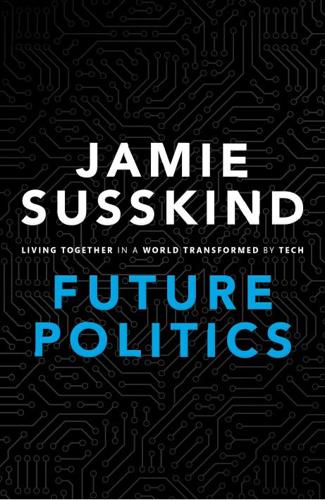
Future Politics: Living Together in a World Transformed by Tech
by
Jamie Susskind
Published 3 Sep 2018
Nadia Judith Enchassi and CNN Wire,‘New Zealand Passport Robot Thinks This Asian Man’s Eyes Are Closed’, KFOR, 11 December 2016 <http://kfor.com/2016/12/11/new-zealand-passport-robotthinks-this-asian-mans-eyes-are-closed/> (accessed 2 December 2017). 12. Richard Yonck, Heart of the Machine: Our Future in a World of Artificial Intelligence (New York: Arcade Publishing, 2017), 50. OUP CORRECTED PROOF – FINAL, 30/05/18, SPi РЕЛИЗ ПОДГОТОВИЛА ГРУППА "What's News" VK.COM/WSNWS Notes 421 13. Douglas Rushkoff, Throwing Rocks at the Google Bus: How Growth Became the Enemy of Prosperity (New York: Portfolio/Penguin, 2016), 31. 14. Nick Couldry, Media, Society, World: Social Theory and Digital Media Practice (Cambridge: Polity, 2012), 25. 15. Frank, Choosing, 7, 26. 16. Christopher Steiner, Automate This: How Algorithms Came to Rule Our World (London: Portfolio, 2012), 55.
…
The Citizen Lab, 30 Nov. 2016 <https:// citizenlab.ca/2016/11/wechat-china-censorship-one-app-two-systems/> (accessed 1 Dec. 2017). Runciman, David. Politics. London: Profile Books, 2014. Ruparelia, Nayan B. Cloud Computing. Cambridge, Mass: MIT Press, 2016. Rushkoff, Douglas. Program or be Programmed:Ten Commands for a Digital Age. New York: Soft Skull Press, 2011. Rushkoff, Douglas. Throwing Rocks at the Google Bus: How Growth Became the Enemy of Prosperity. New York: Portfolio/Penguin, 2016. Russell, Bertrand. In Praise of Idleness. Abingdon: Routledge, 2004. Russell, Stuart J., and Peter Norvig. Artificial Intelligence: A Modern Approach (Third Edition). London: Pearson, 2015. Ryan, Alan. On Politics: A History of Political thought from Herodotus to the Present.

Ours to Hack and to Own: The Rise of Platform Cooperativism, a New Vision for the Future of Work and a Fairer Internet
by
Trebor Scholz
and
Nathan Schneider
Published 14 Aug 2017
Carmen Rojas is the CEO of The Workers Lab, an innovation lab that invests in entrepreneurs, community organizers, and technologists to create sustainable and scalable solutions that build power for U.S. workers. Douglas Rushkoff is an author, teacher, and documentarian who focuses on the ways people, cultures, and institutions create, share, and influence each other’s values. He is Professor of Media Theory and Digital Economics at CUNY/Queens. His new book, Throwing Rocks at the Google Bus: How Growth Became the Enemy of Prosperity, argues that digital networks are still capable of fostering a distributed economy, but only if we can abandon the industrial-age mandate of growth above all. Saskia Sassen (www.saskiasassen.com) is the Robert S. Lynd Professor of Sociology and Member, The Committee on Global Thought, Columbia University.
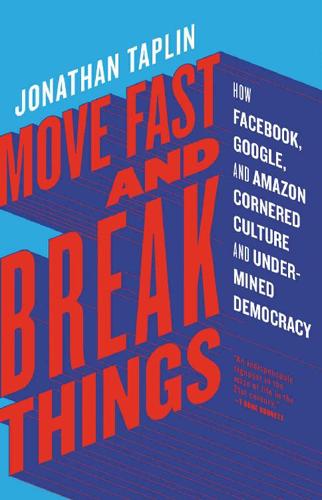
Move Fast and Break Things: How Facebook, Google, and Amazon Cornered Culture and Undermined Democracy
by
Jonathan Taplin
Published 17 Apr 2017
Oxford University’s Martin Programme on Technology and Employment is a critical resource for information on automation and the future of work. It can be found at www.oxfordmartin.ox.ac.uk/news/201501_Technology_Employment. Andrew Gumbel, “San Francisco’s Guerrilla Protest and Google Buses Swells into Revolt,” Guardian, January 25, 2014, www.theguardian.com/world/2014/jan/25/google-bus-protest-swells-to-revolt-san-francisco. Tom Perkins, “Progressive Kristallnacht Coming?” Letter to the Editor, Wall Street Journal, January 24, 2014, www.wsj.com/news/articles/SB10001424052702304549504579316913982034286. David Graeber, The Utopia of Rules: On Technology, Stupidity, and the Secret Joys of Bureaucracy (London: Melville House, 2015).
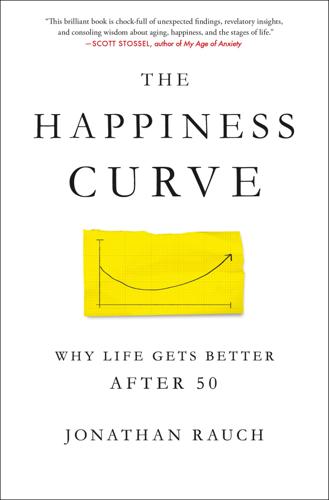
The Happiness Curve: Why Life Gets Better After 50
by
Jonathan Rauch
Published 30 Apr 2018
Inequality has grown, and the visibility of inequality may have grown even more: as sociologists have noted, the economic elite has increasingly pulled away into its own world, with separate schools and neighborhoods and distinctive lifestyles and tastes. If you’re, say, a middle-class teacher or a working-class taxi driver in San Francisco, and if every morning you watch as millionaires who look like teenagers queue on Van Ness Avenue for the Google bus, the status gap probably feels even bigger than the income gap. Rising inequality, both real and perceived, thus poisons economic growth, even for many who are doing okay but watching others do much better. That seems to be happening in America right now. * * * Here’s the most fundamental finding of happiness economics: the factors that most determine our happiness are social, not material.
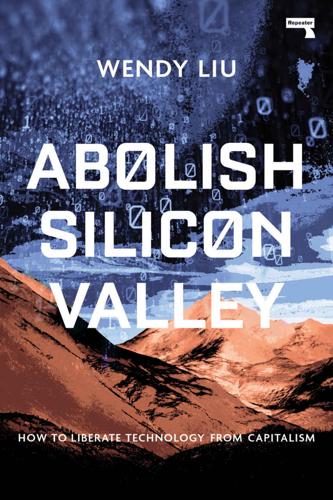
Abolish Silicon Valley: How to Liberate Technology From Capitalism
by
Wendy Liu
Published 22 Mar 2020
The main problem was that I no longer knew what I was supposed to be optimising for. I’d spent most of my life trying to succeed at whatever academic challenges were placed in front of me under the unquestioned assumption that it would all eventually pay off. And yet, the life that I saw stretching before me through the windshield of the Google bus did not look especially enticing. I felt like I had done everything right, yet the reward seemed hollow. There had to be more than this. Meanwhile, Google’s veneer of being a dream workplace started to crack. One TGIF, Larry and Sergey publicly announced an employee’s firing. We were told little except the employee’s name, and that he was fired after an internal investigation concluded he was the source of a press leak.
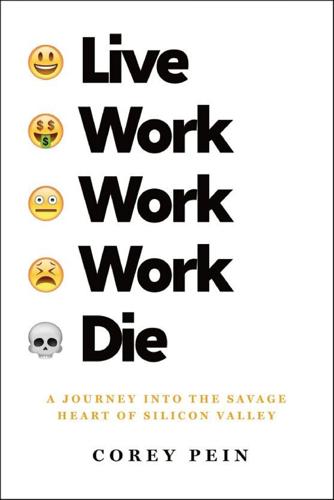
Live Work Work Work Die: A Journey Into the Savage Heart of Silicon Valley
by
Corey Pein
Published 23 Apr 2018
On the night before Halloween—which happened to coincide with a World Series victory by the San Francisco Giants—riots had broken out around the city. In the Mission, windows were smashed and fires set inside an under-construction luxury condo. Someone spray-painted FUCK TECHIES on a bus shelter that carried an ad for the iPhone 6. A Google bus took a pelting. And 20Mission was besieged by an angry mob that threw garbage and bottles at the building and chanted “Techies! Techies!” The techies, for their part, seemed unperturbed. “We are the architects of the future!” one 20Mission resident proclaimed to a reporter. * * * When the day came for my appointment with the manager, Steven, I saw that the architecture of the future had its windows soaped over and its doors sealed shut.
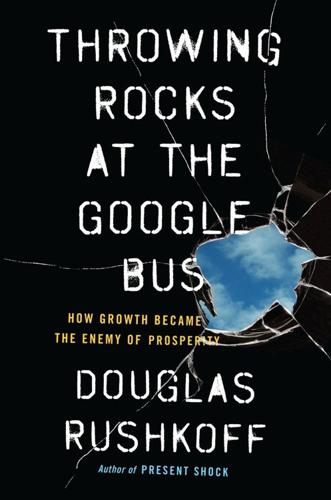
Throwing Rocks at the Google Bus: How Growth Became the Enemy of Prosperity
by
Douglas Rushkoff
Published 1 Mar 2016
Until we do, we remain incapable of properly seeing, much less changing, the functioning of our businesses or the economy in which they operate. We are destined to repeat the same old mistakes. Only this time, thanks to the speed and scale on which digital business operates, our errors threaten to derail not only the innovative capacity of our industries but also the sustainability of our entire society. People throwing rocks at the Google bus will be remembered as the tremor before the quake. Or we may come to our senses and choose a different path. We are at a critical crossroads. Every businessperson, employee, entrepreneur, or creator reading this book understands that we are all operating on borrowed time and borrowed money. We need to make a choice.
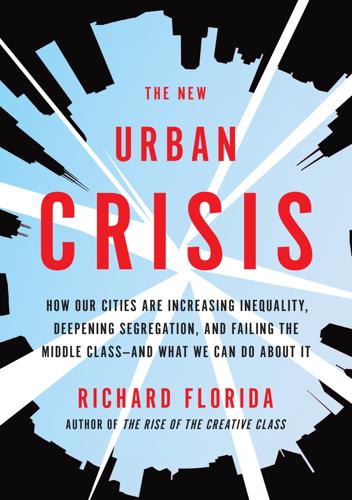
The New Urban Crisis: How Our Cities Are Increasing Inequality, Deepening Segregation, and Failing the Middle Class?and What We Can Do About It
by
Richard Florida
Published 9 May 2016
“You live your comfortable lives surrounded by poverty, homelessness and death, seemingly oblivious to everything around you, lost in the big bucks and success.” Several protesters climbed atop a Yahoo bus, and one, as was widely reported, vomited on its windshield. In San Francisco’s Mission District, protesters dressed as clowns formed human pyramids, bounced giant exercise balls, and performed the can-can in front of a Google bus. For the San Francisco–based activist and writer Rebecca Solnit, those buses were akin to “spaceships on which our alien overlords have landed to rule over us.” “A Latino who has been an important cultural figure for forty years is being evicted while his wife undergoes chemotherapy,” she wrote.
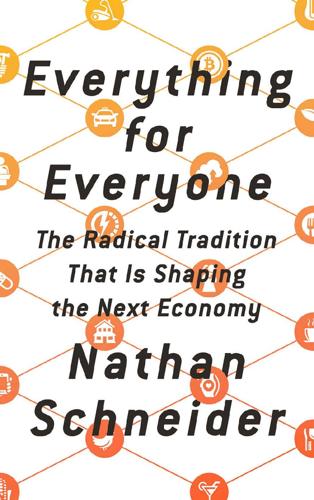
Everything for Everyone: The Radical Tradition That Is Shaping the Next Economy
by
Nathan Schneider
Published 10 Sep 2018
See also Scholz’s subsequent, fuller account of the concept in his pamphlet Platform Cooperativism: Challenging the Corporate Sharing Economy (Rosa Luxemburg Stiftung, 2016), as well as the collective manifesto he and I coedited, Ours to Hack and to Own: The Rise of Platform Cooperativism, a New Vision for the Future of Work and a Fairer Internet (OR Books, 2016). Scholz also writes at length about platform cooperativism in Uberworked and Underpaid: How Workers Are Disrupting the Digital Economy (Polity, 2017). Douglas Rushkoff, the concluding speaker at the 2015 Platform Cooperativism conference, advocates the model in Throwing Rocks at the Google Bus: How Growth Became the Enemy of Prosperity (Portfolio, 2016). 17. Highly recommended: Marjorie Kelly, Owning Our Future: The Emerging Ownership Revolution (Berrett-Koehler Publishers, 2012); Managed by Q, “Managed by Q Stock Option Program Press Conference,” (March 18, 2016), vimeo.com/159580593. 18.

The Myth of Capitalism: Monopolies and the Death of Competition
by
Jonathan Tepper
Published 20 Nov 2018
Equality of Opportunity Project, http://www.equality-of-opportunity.org/. 21. http://www.pewsocialtrends.org/2015/12/09/the-american-middle-class-is-losing-ground/. 22. https://qz.com/711854/the-inequality-happening-now-in-san-francisco-will-impact-america-for-generations-to-come/. 23. http://www.mercurynews.com/2017/10/20/san-jose-san-francisco-oakland-job-losses-hammer-bay-area-employers-slash-thousands-of-jobs/. 24. https://www.theguardian.com/world/2014/jan/25/google-bus-protest-swells-to-revolt-san-francisco. 25. https://www.politico.com/magazine/story/2014/06/the-pitchforks-are-coming-for-us-plutocrats-108014. Conclusion: Economic and Political Freedom 1. Friedrich Hayek, The Road to Serfdom (New York: George Routledge & Sons, 1944), p. 204. 2. http://bcw-project.org/church-and-state/second-civil-war/agreement-of-the-people. 3.
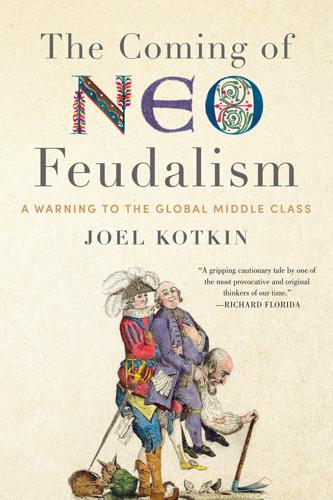
The Coming of Neo-Feudalism: A Warning to the Global Middle Class
by
Joel Kotkin
Published 11 May 2020
utm_source=Mic+Check&utm_campaign=2b200dd408-Thursday_July_167_15_2015&utm_medium=email&utm_term=0_51f2320b33-2b200dd408-285306781. 53 Katy Murphy, “The California Dream is tough to afford if you’re under 40,” Mercury News, February 21, 2018, https://www.mercurynews.com/2018/02/18/the-california-dream-is-tough-to-afford-if-youre-under-40/; Joel Kotkin and Wendell Cox, “Fading Promise: Millennial Prospects in the Golden State,” Center for Demographics and Policy, May 5, 2017, http://centerforcaliforniarealestate.org/publications/Kotkin-Fading-Dream-printable.pdf. 54 Center for Opportunity Urbanism, Beyond Gentrification. 55 John Aidan Byrne, “The Exodus of New York City’s endangered middle class,” New York Post, December 22, 2018, https://nypost.com/2018/12/22/the-exodus-of-new-york-citys-endangered-middle-class/; Jane Jacobs, The Death and Life of Great American Cities (New York: Vintage, 1962), 282. 56 National Urban Coalition, Displacement: City Neighborhoods in Transition, Washington, D.C., 1978. 57 Kristian Behrens and Frederic Robert-Nicoud, “Urbanization Makes the World More Unequal,” VoxEU, July 24, 2014, https://voxeu.org/article/inequality-big-cities. 58 Richard Florida, “Mapping the New Urban Crisis,” City Lab, April 13, 2017, https://www.citylab.com/equity/2017/04/new-urban-crisis-index/521037/; Patrick Sharkey, “Rich Neighborhood, Poor Neighborhood: How Segregation Threatens Social Mobility,” Brookings, December 5, 2013, https://www.brookings.edu/blog/social-mobility-memos/2013/12/05/rich-neighborhood-poor-neighborhood-how-segregation-threatens-social-mobility/. 59 Helen Raleigh, “Gentrification Provokes a Cofee Clash in Denver’s Five Points,” Wall Street Journal, December 22, 2017, https://www.wsj.com/articles/gentrification-provokes-a-coffee-clash-in-denvers-five-points-1513983831; Cameron McWhirter, “Atlanta’s Growing Pains Are Getting Worse,” Wall Street Journal, August 31, 2018, https://www.wsj.com/articles/atlantas-growing-pains-are-getting-worse-1535707800; Richard Campanella, “Gentrification and Its Discontents: Notes From New Orleans,” New Geography, February 28, 2013, http://www.newgeography.com/content/003526-gentrification-and-its-discontents-notes-new-orleans; “Google abandons Berlin base after two years of resistance,” Guardian, October 24, 2018, https://www.theguardian.com/technology/2018/oct/24/google-abandons-berlin-base-after-two-years-of-resistance; Chantal Braganza, “Why opponents of gentrification have taken to the streets of Hamilton,” TVO, April 5, 2018, https://tvo.org/article/current-afairs/why-opponents-of-gentrification-have-taken-to-the-streets-of-hamilton; David Streitfeld, “Protesters Block Google Buses in San Francisco, Citing ‘Techsploitation,’” New York Times, May 31, 2018, https://www.nytimes.com/2018/05/31/us/google-bus-protest.html?emc=edit_ca_20180601&nl=california-today&nlid=8514846720180601&te=1. 60 Alene Tchekmedyian and Joseph Serna, “‘I think it’s arson’: Developer suspects political motives as officials probe latest Bay Area fire,” Los Angeles Times, July 10, 2017, https://www.latimes.com/local/lanow/la-me-ln-oakland-construction-ires-20170710-story.html; “Is Boyle Heights Coffee Shop Vandalism An Anti-Gentrification Message?”
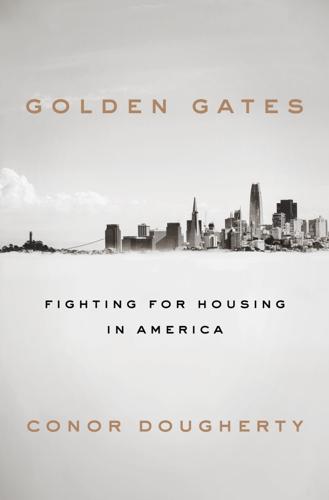
Golden Gates: Fighting for Housing in America
by
Conor Dougherty
Published 18 Feb 2020
CHAPTER 1: MEMBERS OF THE PUBLIC exist yet as: City and County of San Francisco, San Francisco Planning Commission, Public Meeting (SFGovTV, May 1, 2014), sanfrancisco.granicus.com/player/clip/19987?view_id=20. nicely stenciled lettering: “G.E.T. OUT: Faux Tech Contingent Brings the Gentrification of SF OUT of the Closet at PRIDE,” Heart of the City, www.heart-of-the-city.org/get-out--sf-pride.html. a human blockade: “December 9, 2013,” Heart of the City, www.heart-of-the-city.org/google-bus-block---dec-9.html. chronicled on Twitter: Nick Wingfield, “Seattle Gets Its Own Tech Bus Protest,” New York Times, February 10, 2014, bits.blogs.nytimes.com/2014/02/10/seattle-gets-its-own-tech-bus-protest/?_php=true&_type=blogs&_php=true&_type=blogs&_r=1. dividing up housing: Sonia Hirt, Zoned in the USA: The Origins and Implications of American Land-Use Regulation (London: Cornell University Press, 2014), 153.

The Human City: Urbanism for the Rest of Us
by
Joel Kotkin
Published 11 Apr 2016
“Outskirts may have preceded early city,” Los Angeles Times, http://articles.latimes.com/2007/sep/01/science/sci-city1. McARDLE, Megan. (2015, April 17). “New Starter Homes Hit a Dead Stop,” Bloomberg View, http://www.bloombergview.com/articles/2015-04-17/new-starter-homes-hit-a-dead-stop. McBRIDE, Sarah. (2013, December 10). “Google bus blocked in San Francisco gentrification protest,” Reuters, http://www.reuters.com/article/2013/12/10/us-google-protest-idUSBRE9B818J20131210. McCLAIN, James L. and MERRIMAN, John M. (1997). “Edo and Paris: Cities and Power,” Edo and Paris: Urban Life in the Early Modern Era, Ithaca: Cornell University Press.

Chokepoint Capitalism
by
Rebecca Giblin
and
Cory Doctorow
Published 26 Sep 2022
—CRAIG NEWMARK, founder of Craigslist “Instead of just complaining about the corporate stranglehold over production and exchange, Giblin and Doctorow show us why this happened, how it works, and what we can do about it… . An infuriating yet inspiring call to collective action.” —DOUGLAS RUSHKOFF, author of Throwing Rocks at the Google Bus and Survival of the Richest “Rebecca Giblin and Cory Doctorow lay out their case in plain and powerful prose, offering a grand tour of the blighted cultural landscape and how our arts and artists have been chickenized, choked, and cheated.” —KAISER KUO, host and cofounder of The Sinica Podcast “Creators are being ground up by the modern culture industries, with little choice but to participate in markets that weaken their power and economic return.

The Wires of War: Technology and the Global Struggle for Power
by
Jacob Helberg
Published 11 Oct 2021
It was November 6, 2016. And everything was about to change. Chapter 1 THE ORIGINS OF THE GRAY WAR The night before my first day at Google, I was too excited to sleep. That morning, fortified by several cups of coffee, I left my house in San Francisco’s Glen Park neighborhood and hopped on the Google bus to Mountain View. At around 6:00, I walked into the storied Googleplex, the sprawling campus of low-slung glass-and-brick buildings that make up the company’s main headquarters. Google was the quintessential Silicon Valley start-up. Stanford PhD students Larry Page and Sergey Brin had incorporated the company in 1998, after working out of the garage of Susan Wojcicki (now YouTube’s CEO).

Blockchain Revolution: How the Technology Behind Bitcoin Is Changing Money, Business, and the World
by
Don Tapscott
and
Alex Tapscott
Published 9 May 2016
—Erik Brynjolfsson, Professor at MIT; coauthor of The Second Machine Age “An indispensable and up-to-the-minute account of how the technology underlying bitcoin could—and should—unleash the true potential of a digital economy for distributed prosperity.” —Douglas Rushkoff, author of Present Shock and Throwing Rocks at the Google Bus “Technological change that used to develop over a generation now hits us in a relative blink of the eye, and no one tells this story better than the Tapscotts.” —Eric Spiegel, President and CEO, Siemens USA “Few leaders push us to look around corners the way Don Tapscott does. With Blockchain Revolution he and his son Alex teach us, challenge us, and show us an entirely new way to think about the future.”

In the Plex: How Google Thinks, Works, and Shapes Our Lives
by
Steven Levy
Published 12 Apr 2011
Besides a number of work-related courses (“Managing Within the Law,” “Advanced Interviewing Techniques”), there were classes in creative writing, Greek mythology, mindfulness-based stress reduction, and, for those contemplating a new career funded with Google gains, “Terroir: The Geology & Wines of California.” In April 2010, a software engineer named Tim Bray blogged his experiences as a Noogler on a single day at Mountain View. He woke up at a Google Apartment, a temporary arrangement while visiting from his home base in Seattle. He caught a Google Bus to the campus, doing a bit of work using the Google Wi-Fi supplied to the passengers, arriving in time for free breakfast at one of the Google cafés. For lunch, a companion took him to the Jia café across a few parking lots, known for its excellent sushi. (Thursday was Hot Pot day.) Later in the afternoon he wanted to buy a new camera, so he borrowed one of the free electric-powered Toyota Priuses available to employees and drove to a Best Buy to make his purchase.

Northern California Travel Guide
by
Lonely Planet
Fast Companies, Slow Food The technology boom has changed the cultural DNA of Northern California, with cutting-edge biotech research, online social media juggernauts such as Facebook and Twitter, and of course Google. Tech gazillionaires have driven up housing prices in San Francisco (and beyond), transforming the city and surrounding areas into bedroom communities for Silicon Valley. Longtime locals aren't pleased, and blame the giant tech shuttlebuses – which everyone calls the 'Google Bus' – for the city's gentrification. If talking tech is straying into dangerous social territory, change the subject to food. Northern Californians are obsessed by what they eat, fetishizing seasonal foods such as heirloom peaches and heritage cuts of pork the way a bodybuilder worships protein supplements.